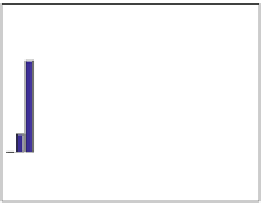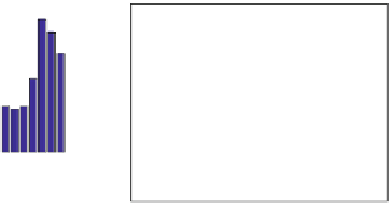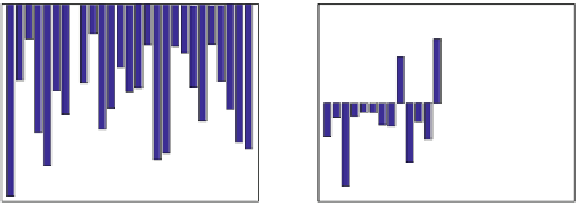Geoscience Reference
In-Depth Information
AMSU− A
AIRS
0.15
0.04
0.02
0.1
0
−0.02
0.05
−0.04
−0.06
0
−0.08
−0.05
−0.1
0
5
10
15
20
25
0
5
10
15
20
25
IASI
SSMIS
0
0.1
−0.02
0.05
−0.04
−0.06
0
−0.08
−0.05
−0.1
−0.12
−0.1
0
5
10
15
20
25
0
5
10
15
20
25
assimilation/forecast cycle
assimilation/forecast cycle
s
o
for the atmospheric sounders AMSU-A, AIRS, IASI, and SSMIS during each assimilation/forecast
cycle
Forecast error sensitivity (J Kg
1
) to the observation error variance weight coefficient
Fig. 9.12
Bormann and Bauer
(
2010
)and
Bormann et al.
(
2010
,
2011
) implemented var-
ious diagnostics to estimate observation error statistics in the European Centre for
Medium-Range Weather Forecasts (ECMWF) assimilation system. Their findings
suggest that observation-error estimates for sounder radiances are significantly
lower than the values assigned in the operational systems and indicate a too-
conservative use of the AMSU-A instrument. In the above-mentioned studies it was
also found that AMSU-A shows little spatial and interchannel error correlations
and that error correlations of larger magnitude are present for the IASI, AIRS, and
SSMIS instruments. In this context, the sensitivity guidance may be interpreted as an
attempt to compensate for unrepresented observation error correlations in the DAS
through artificial inflation of the assigned error variances. Caution must be exercised
in the interpretation of the sensitivity analysis for tuning DAS error covariance
parameters and, as explained in Sect.
9.3.4
, the derivative information only allows
the identification of a descent direction in the parameter space and without providing
the optimal parameter values. This information may be considered in conjunction
with other diagnostic tools such as the methods of
Desroziers and Ivanov
(
2001
)
and
Desroziers et al.
(
2005
).























































































































Search WWH ::

Custom Search